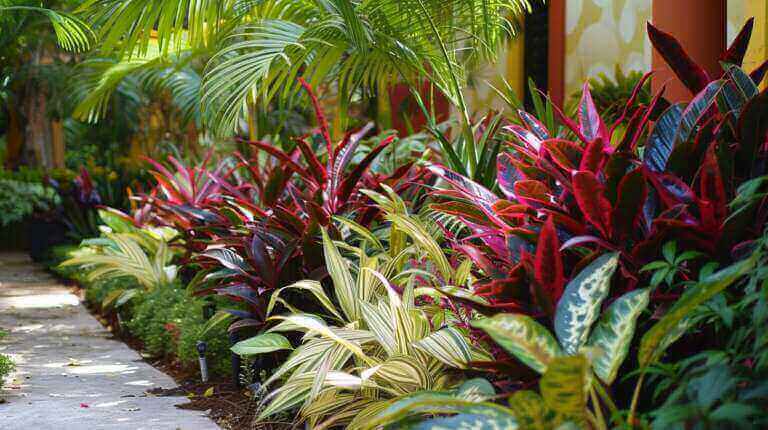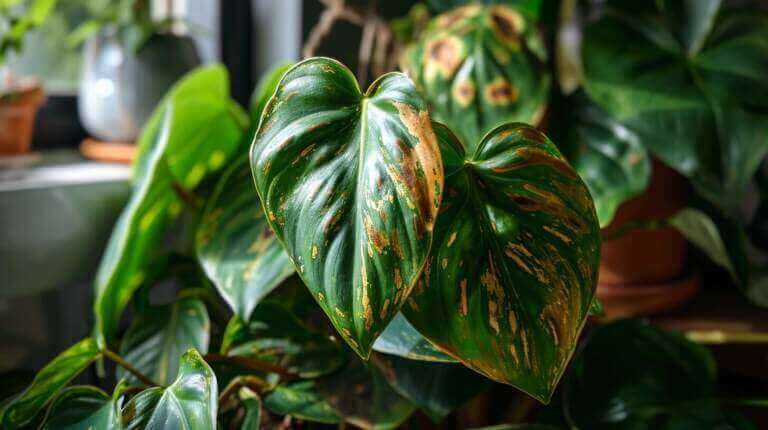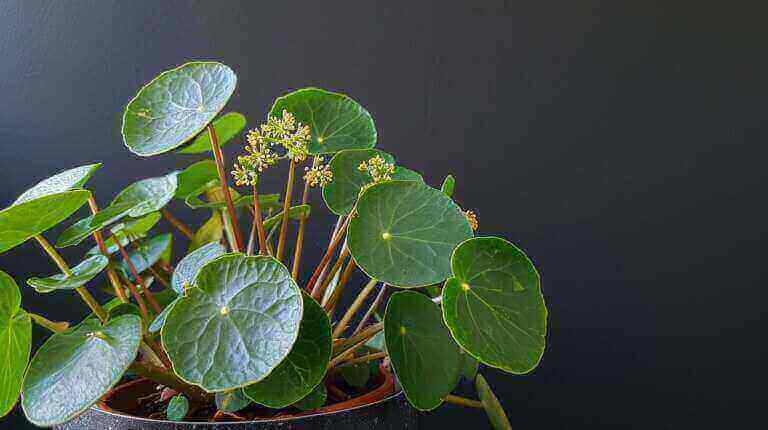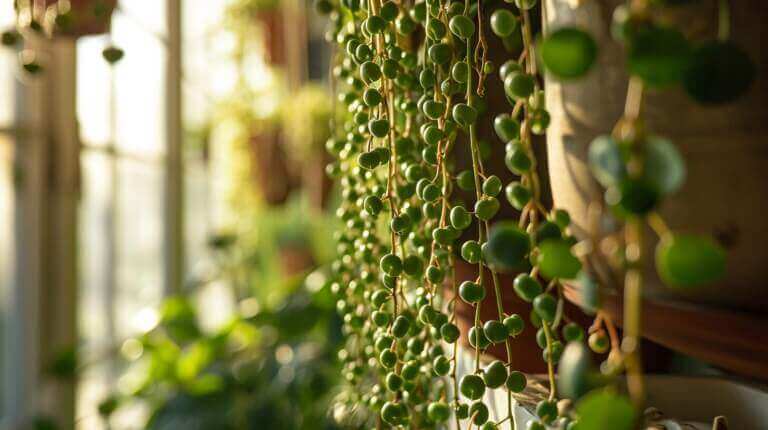Reasons Why Your Elephant Ear Leaves Drooping? How To Fix Elephant Ear Plant Drooping.
Elephant ear plants, also known as Alocasias, are popular indoor plants with distinctive leaves that resemble the ears of an elephant. However, drooping leaves are a common issue that can indicate the plant is not thriving. There are several reasons why elephant ear plants may droop, including incorrect watering, poor drainage, low light levels, nutrient deficiency, low humidity, and cold temperatures. Understanding these factors and taking appropriate action can help revive your droopy elephant ear plant.
Key Takeaways:
- Incorrect watering can cause drooping in elephant ear plants. Ensure the soil is evenly moist, but not waterlogged.
- Poor drainage can lead to drooping leaves. Use pots with drainage holes or add drainage materials to prevent waterlogged roots.
- Low light levels can cause drooping. Place the plant in a bright location with indirect light.
- Nutrient deficiency can contribute to drooping. Regularly fertilize the plant and treat for pests if necessary.
- Low humidity can cause leaves to droop. Increase humidity through misting or using a humidifier.
Elephant Ear Leaves Drooping(Incorrect Watering)
One of the most common causes of drooping leaves in elephant ear plants is incorrect watering. These plants prefer evenly moist soil, but not waterlogged conditions. Overwatering can lead to root rot, while underwatering can cause the leaves to droop as well. It is important to water the plant regularly, but not excessively, and to ensure the soil is well-draining. Checking the soil moisture regularly and adjusting the watering schedule accordingly can help prevent drooping caused by incorrect watering.
When it comes to watering your elephant ear plant, it’s important to strike the right balance. Overwatering can suffocate the roots and lead to root rot, causing the leaves to droop. Underwatering, on the other hand, can cause dehydration and result in drooping leaves as well. To avoid these issues, water your plant whenever the top inch of soil feels dry. Be sure to water thoroughly, allowing excess water to drain out of the bottom of the pot. This will help prevent waterlogging, while also ensuring that the roots receive enough moisture.
Another helpful tip is to avoid allowing your elephant ear plant to sit in standing water. This can promote root rot and make it even harder for the plant to recover. To improve drainage, consider using a well-draining potting mix and ensuring that your pot has drainage holes. You can also place a layer of stones or pebbles at the bottom of the pot to create a drainage layer. This will prevent excess water from accumulating at the roots and causing drooping leaves.
| Incorrect Watering Practices | Consequences | Prevention |
|---|---|---|
| Overwatering | Root rot | Water regularly but not excessively |
| Underwatering | Dehydration | Water when top inch of soil is dry |
| Waterlogging | Root suffocation | Ensure well-draining soil and pot |
By following proper watering practices, you can help prevent drooping in your elephant ear plant and promote healthy growth. Remember to monitor the soil moisture, adjust your watering schedule as needed, and provide good drainage for the roots. With the right care, your elephant ear plant will thrive and showcase its beautiful foliage.
Elephant Ear Leaves Are Drooping(Poor Drainage)
Poor drainage is a significant factor that can contribute to drooping leaves in elephant ear plants. When the pots used for these plants do not have proper drainage holes, the roots can become waterlogged, leading to issues such as root rot. This can cause the leaves to droop and negatively impact the overall health of the plant.
To prevent drooping caused by poor drainage, it is essential to ensure that your elephant ear plant is potted in a container with good drainage. Consider using a plant pot with drainage holes or adding drainage materials such as rocks or perlite to the bottom of the pot. These materials help improve water flow and prevent water from accumulating around the roots.
| Signs of Poor Drainage | Solutions |
|---|---|
| Drooping leaves | Use a pot with drainage holes |
| Waterlogged soil | Add drainage materials to the pot |
| Root rot | Improve drainage and adjust watering |
By addressing poor drainage, you can help promote healthy root growth and prevent drooping in your elephant ear plant. Ensuring proper drainage is a crucial step in providing the optimal growing conditions for your plant, allowing it to thrive and display its beautiful foliage.
Elephant Ear Drooping Leaves(Low Light Levels)
Proper lighting is crucial for the health and growth of your elephant ear plant. These plants thrive in bright indirect light, which means they need bright, filtered sunlight to perform their best. If your elephant ear plant is not getting enough light, it can lead to drooping leaves.
When positioning your plant, choose a bright location next to a window that receives indirect sunlight. Avoid placing it in direct sunlight as this can scorch the leaves. In dark or windowless rooms, consider using grow lights to provide the necessary light levels. Regularly monitor your plant for any signs of yellowing leaves, as this can be a clear indication that it is not receiving enough light.
Maintaining the right light levels for your elephant ear plant will help prevent drooping and ensure its foliage stays healthy and vibrant.
Key Takeaways:
- Elephant ear plants need bright indirect light to thrive.
- Position your plant near a window that receives filtered sunlight.
- Avoid placing your plant in direct sunlight or dark rooms.
- Monitor your plant for yellowing leaves as a sign of insufficient light.
Drooping Leaves In Elephant Ear Plants(Nutrient Deficiency)
Nutrient deficiency is a common cause of drooping leaves in elephant ear plants. These plants require a well-balanced fertilizer to provide the necessary nutrients for healthy growth. A lack of essential nutrients can lead to weakened plants and drooping foliage. Regularly feeding your elephant ear plant with a weak fertilizer can help prevent nutrient deficiency and promote vibrant, upright leaves.
| Nutrient | Function |
|---|---|
| Nitrogen | Stimulates leaf and stem growth |
| Phosphorus | Promotes root development and flowering |
| Potassium | Aids in overall plant health and disease resistance |
In addition to nutrient deficiency, pests can also contribute to drooping leaves in elephant ear plants. Common pests such as aphids, mealybugs, and spider mites can cause damage to the plant’s foliage. Regularly inspecting your plant for signs of pests and treating them promptly can help prevent drooping caused by these unwanted visitors. Using organic pest control methods, such as neem oil or insecticidal soap, can effectively manage pest infestations without harming the plant.
Remember, providing the right nutrients and protecting your elephant ear plant from pests are crucial steps in preventing drooping leaves. By giving your plant the care it needs, you can help it thrive and enjoy its lush, upright foliage.
Drooping Elephant Ear Plant(Low Humidity)
Proper humidity levels are crucial for the health and well-being of elephant ear plants. These tropical beauties thrive in high humidity environments and can suffer when exposed to low humidity conditions. When the air lacks moisture, the leaves of your elephant ear plant may start to droop and lose their vibrant appearance. Understanding the effects of low humidity and taking the necessary steps to maintain suitable moisture levels can help prevent drooping and keep your plant thriving.
To combat low humidity, consider misting your elephant ear plant regularly. Using a spray bottle, gently mist the leaves to increase the moisture in the air surrounding the plant. This mimics the humid conditions of the plant’s natural habitat and helps prevent drooping caused by dry air. Additionally, make sure to water your plant regularly, as moist soil can contribute to a more humid environment. By keeping the soil consistently damp, you can create a microclimate that aids in maintaining adequate humidity levels for your elephant ear plant.
The Importance of Consistent Care
Consistency is key when it comes to caring for your elephant ear plant’s humidity needs. Low humidity can have detrimental effects on the overall health of your plant, so it’s essential to monitor humidity levels regularly. If you live in an area with naturally low humidity or have an indoor environment that tends to be dry, using a humidifier can be an effective solution. A humidifier can provide consistent moisture levels and help prevent drooping by maintaining optimal humidity for your plant.
Remember, proper care and attention are necessary to prevent drooping in elephant ear plants. By ensuring suitable humidity levels, along with providing proper sunlight exposure, regular watering, and protecting your plant from cold temperatures, you can create an environment that promotes optimal growth and vibrant foliage.
Cold Temperatures: Protecting Your Elephant Ear Plant in Winter
When winter comes, it’s important to take extra precautions to protect your elephant ear plant from cold temperatures. These plants are not cold-hardy and can suffer damage or even die if exposed to freezing weather. By implementing indoor protection measures and providing proper winter care, you can ensure the health and survival of your beloved plant.
Indoor Protection
To shield your elephant ear plant from the cold, bring it indoors before the temperature drops. Find a suitable location in your home that offers bright, indirect light and maintains a consistent temperature between 65-75°F (18-24°C). Avoid placing the plant near drafts or heat sources, as extreme temperature fluctuations can stress the plant and cause drooping leaves.
Replanting your elephant ear plant in a larger pot with fresh, well-draining soil before bringing it indoors can also provide added protection. This will give the roots ample space to grow while reducing the risk of waterlogging, which can lead to drooping leaves.
Winter Care
During winter, the care requirements for your elephant ear plant may vary. It’s essential to adjust your watering schedule to accommodate the plant’s reduced growth rate. Check the soil moisture regularly and only water when the top inch of soil feels dry. Overwatering can promote root rot, while underwatering can cause the leaves to droop.
Maintaining the right humidity levels is also crucial for the health of your plant. In winter, indoor air tends to be drier due to heating systems. You can increase humidity by using a humidifier or placing a tray of water near the plant. Regularly misting the leaves can also provide a boost of moisture, helping to prevent drooping caused by low humidity.
By following these precautions and providing proper winter care, you can protect your elephant ear plant from the cold and ensure its continued growth and vitality.
| Winter Protection Checklist |
|---|
| Bring the plant indoors before the temperature drops |
| Find a bright, indirect light location indoors |
| Avoid drafts and extreme temperature fluctuations |
| Replant the plant in a larger pot with well-draining soil |
| Adjust watering schedule to accommodate reduced growth |
| Maintain proper humidity levels with a humidifier or misting |
FAQ
Why are my elephant ear plants drooping?
Drooping leaves in elephant ear plants can be caused by several factors, including incorrect watering, poor drainage, low light levels, nutrient deficiency, low humidity, and cold temperatures.
How do I fix a droopy elephant ear plant?
To fix a droopy elephant ear plant, you need to identify the underlying cause and take appropriate action. This may include adjusting your watering practices, improving drainage, providing adequate light, fertilizing the plant, maintaining proper humidity, and protecting it from cold temperatures.
What can cause incorrect watering in elephant ear plants?
Incorrect watering in elephant ear plants can be caused by overwatering or underwatering. Overwatering can lead to root rot, while underwatering can cause the leaves to droop as well.
How can I improve the drainage for my elephant ear plant?
To improve the drainage for your elephant ear plant, make sure the pot has proper drainage holes. You can also add drainage materials such as rocks or perlite to the bottom of the pot.
What kind of light do elephant ear plants need?
Elephant ear plants require bright, indirect light to thrive. They should be positioned near a window in a bright location, but not in direct sunlight. Low light levels can cause the leaves to droop over time.
How can I prevent nutrient deficiency in my elephant ear plant?
Regularly feeding the plant with a well-balanced fertilizer can help prevent nutrient deficiency. It is especially important to fertilize if the plant has been in the same pot for a long time and the soil is depleted of nutrients. Pests such as aphids, mealybugs, and spider mites can also cause drooping leaves and should be treated accordingly.
How can I maintain proper humidity for my elephant ear plant?
Elephant ear plants thrive in high humidity environments. Regularly misting the leaves can help provide sufficient humidity. Checking the soil moisture regularly and watering the plant appropriately can also help maintain the right humidity levels. Using a plant humidifier or a pebble tray can provide consistent humidity for the plant.
How do I protect my elephant ear plant from cold temperatures?
Elephant ear plants are not cold-hardy and should be brought indoors or provided with protection during colder months. Adjusting the temperature, propagating the plant, using a humidifier, and replanting in the spring are common practices to protect the plant from cold temperatures.
How can I prevent drooping in my elephant ear plant?
To prevent drooping in your elephant ear plant, it is important to provide the right amount of sunlight, ensure correct watering practices, maintain proper humidity levels, and protect the plant from cold temperatures. Regular monitoring of soil moisture, soil quality, and plant health can help identify and address any issues before they lead to drooping.







